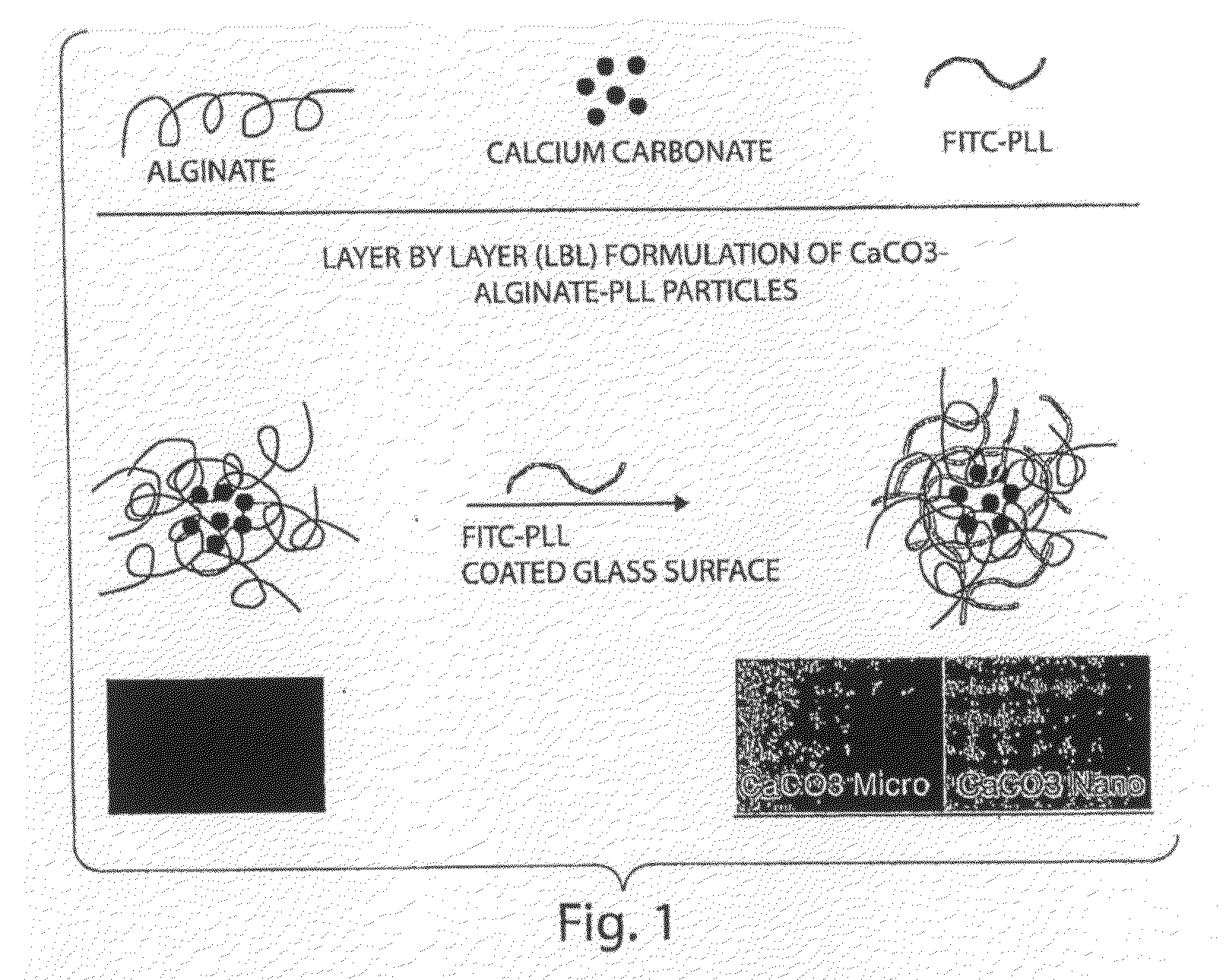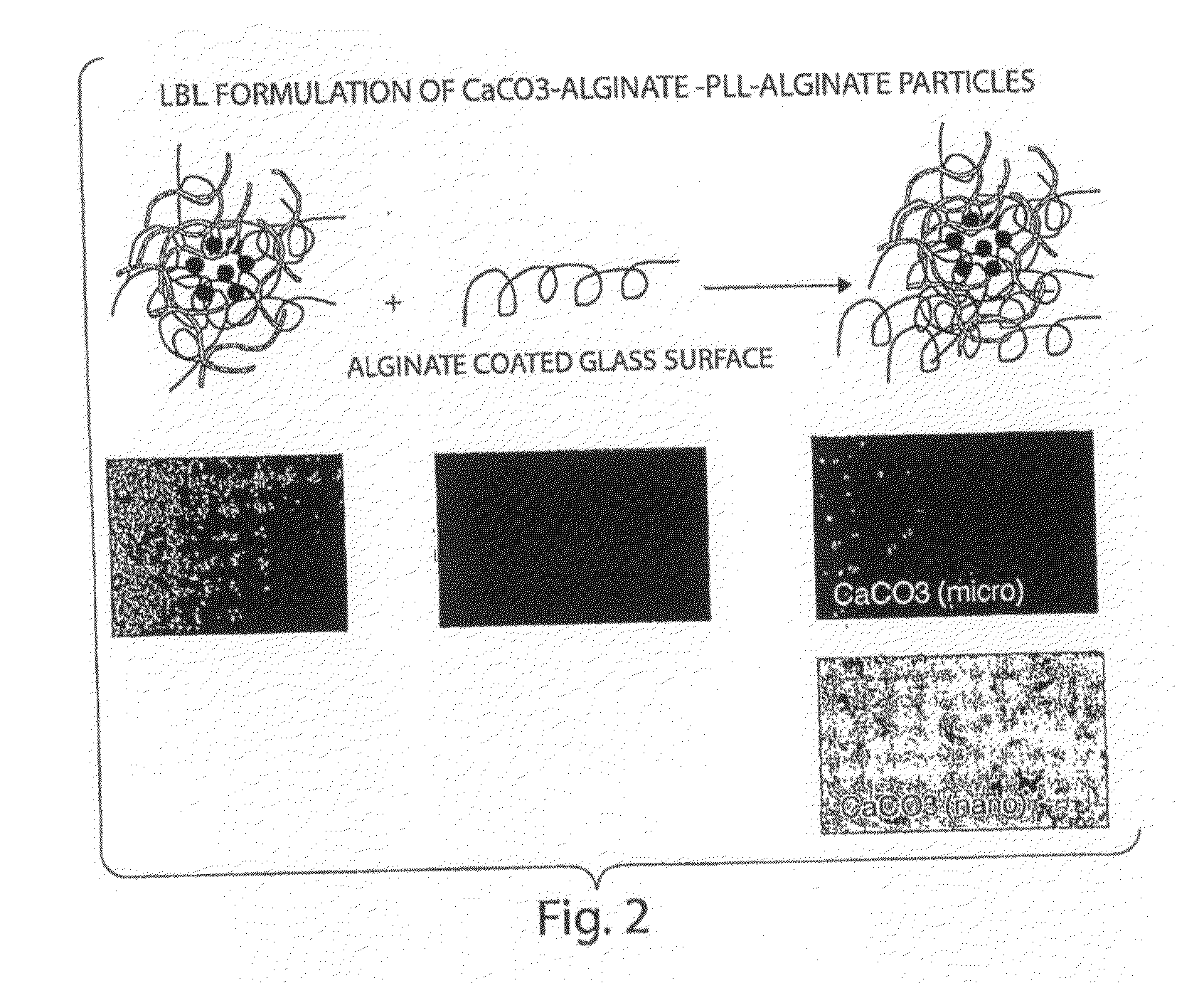Methods and Compositions For Altering Biological Surfaces
a biological surface and composition technology, applied in the field of methods and compositions for altering biological surfaces, can solve the problems of increasing tooth density, increasing tooth density, and increasing tooth density, and costing upwards of $1000
- Summary
- Abstract
- Description
- Claims
- Application Information
AI Technical Summary
Benefits of technology
Problems solved by technology
Method used
Image
Examples
example 1
Layer by Layer (LBL) Formulation of CaCO3-Alginate-PLL Particles
[0167]In this experiment, CaCO3 particles (microparticles and nanoparticles) were suspended in double-distilled (dd) H2O at (30 v / v %) then mixed with 1% sodium alginate solution. The resulting CaCO3-alginate mixture was collected by centrifugation at 10008 for 5 minutes, and washed 3× by resuspending the particles in ddH20. The particles were coated onto a glass surface coated with 0.01% of Poly-L-Lysine-FITC, then imaged under a fluorescent microscope. All images were taken under the same gain and exposure setting. The layer by layer (LBL) formulation of CaCO3-alginate-PLL particles on a glass surface is shown in FIG. 1. Layer by layer (LBL) formulation of CaCO3-alginate-PLL-alginate particles on an alginate-coated surface is shown in FIG. 2.
example 2
Layer by Layer (LBL) Formulation of Alginate and PLL
[0168]In this experiment, Alginate-PLL particles were formed by placing 1% sodium alginate solution on a glass surface coated with 0.01% PLL-FITC. Alginate-PLL-alginate particles were formed by placing a suspension of alginate-CaCO3 on a glass surface coated with 2% sodium alginate. Both alginate-PLL and alginate-PLL-alginate particles were washed 3× in ddH20 before being placed onto the pretreated glass surface. The layer-by-layer (LBL) formulation of alginate and PLL on an alginate-coated glass surface is depicted in FIG. 3.
example 3
Separation of Unbound PLL-FITC from CaCO3-Alginate-PLL Particles
[0169]CaCO3-alginate particles were mixed with PLL-FITC solution according to the procedure described in Example 1. The particles were then collected by centrifugation and the supernatant after each wash was placed on a glass surface pretreated with 1% alginate. FIG. 4 depicts the separation of the unbound PLL-FITC from the solution containing CaCO3-alginate-PLL particles.
PUM
| Property | Measurement | Unit |
|---|---|---|
| diameter | aaaaa | aaaaa |
| diameter | aaaaa | aaaaa |
| diameter | aaaaa | aaaaa |
Abstract
Description
Claims
Application Information
 Login to View More
Login to View More - R&D
- Intellectual Property
- Life Sciences
- Materials
- Tech Scout
- Unparalleled Data Quality
- Higher Quality Content
- 60% Fewer Hallucinations
Browse by: Latest US Patents, China's latest patents, Technical Efficacy Thesaurus, Application Domain, Technology Topic, Popular Technical Reports.
© 2025 PatSnap. All rights reserved.Legal|Privacy policy|Modern Slavery Act Transparency Statement|Sitemap|About US| Contact US: help@patsnap.com



